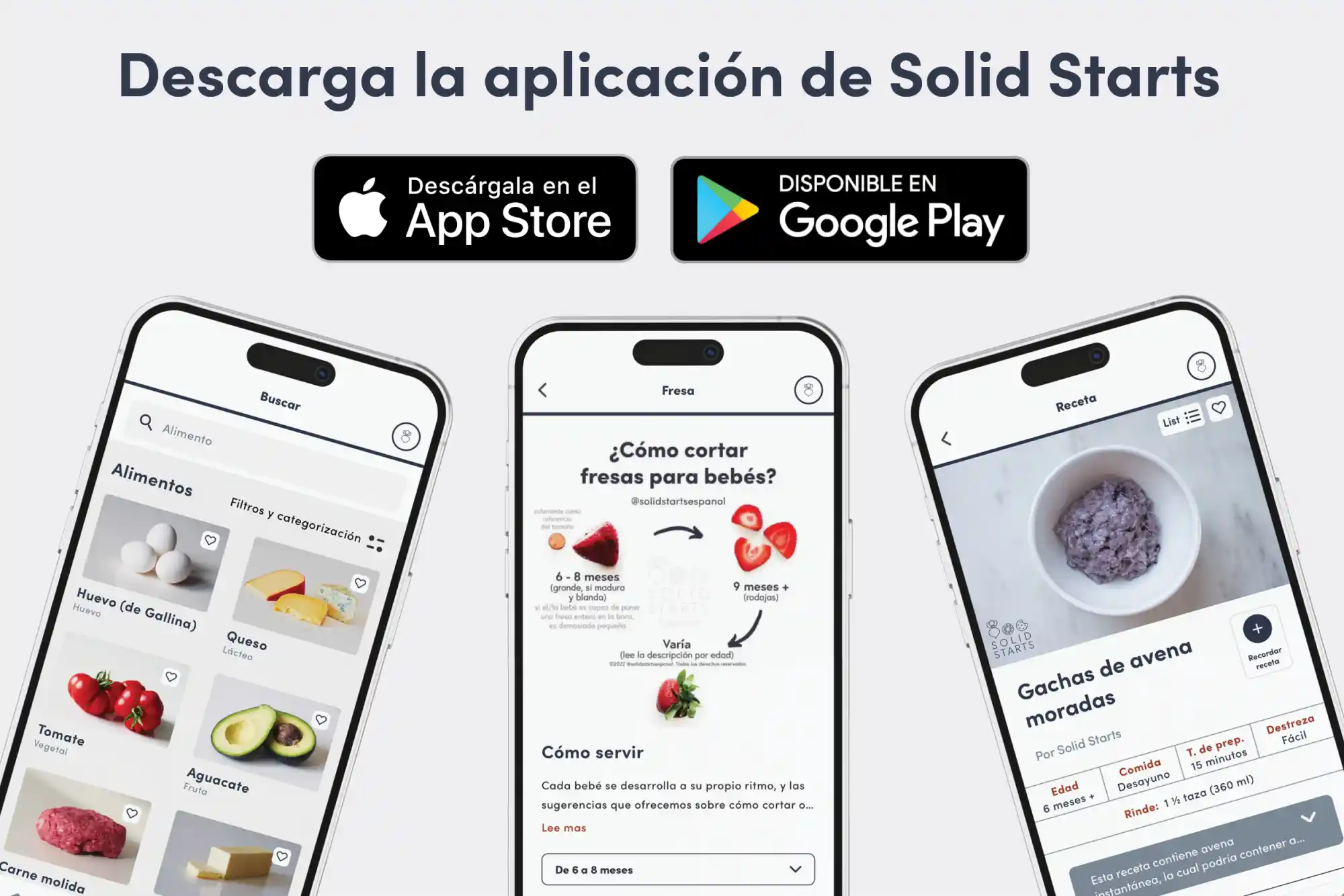Limón verde
Fruta
Sugerencia de edades
6 meses
Alto contenido de hierro
No
Alérgeno común
No

When can babies have limes?
¡Lo sentimos, esta página aún no está disponible en español! Estamos trabajando tan rápido como podemos para traducir todo nuestro contenido, gracias por tu paciencia y apoyo.
Lime may be introduced as soon as baby is ready to start solids, which is generally around 6 months of age. Note that lime is highly acidic and may cause a harmless and temporary rash upon contact with skin and also may cause or worsen diaper rash.
Limes are part of the citrus family—a diverse group of fruits that vary in acidity and genetic origin. Lime is believed to have originated in Southeast Asia, where different varieties of citrus plants crossed with one another to form the origins of the wide range of citrus available today. While different varieties of limes can be red, purple, orange, or yellow, most are bright green, including key lime, makrut lime, and the seedless lime from Iran that is the most widely cultivated variety today.
Are limes healthy for babies?
Yes. Although typically consumed in small amounts, lime offers fiber and fluid, in addition to, potassium, vitamin B6, and vitamin C. Together, these nutrients work together to support digestive health, hydration, electrolyte balance, immune function, and iron absorption. Lime peel also contains numerous plant-based compounds like flavonoids that have anti-inflammatory and antioxidant properties to support bodily repair and recovery.
Is lime a common allergen?
No, lime is not classified as a common food allergen. However, self-reported sensitivity to citrus is described frequently in medical literature around the world. Also, individuals with Oral Allergy Syndrome (also called pollen food allergy syndrome) may be sensitive to citrus fruits such as lime. In particular, individuals who are allergic to grass and certain tree pollens may also be more sensitive to citrus fruits. Oral Allergy Syndrome typically results in short-lived itching, tingling, or burning in the mouth, and it is unlikely to result in a dangerous reaction. Peeling or cooking lime can help minimize the reaction. The peel of lime also contains a compound called limonene, which is a known contact allergen, and can cause allergic contact dermatitis in sensitized individuals.
Note that lime is highly acidic, and exposure to the acid may cause a harmless rash upon contact with skin, typically around the mouth. The rash usually dissipates shortly after it shows up. Additionally, the acidity of citrus fruits like lime can cause or worsen diaper rashes when consumed in excess. Barrier ointments (such as pure petroleum jelly or a plant-based oil/wax combination) can be applied to the face and diaper area before mealtime to help protect the skin.
Lime is also associated with phytophotodermatitis, a skin condition that occurs when a person gets the juice from the fruit on the skin and doesn't wash it off. Compounds in the juice are activated by the sun and cause a pigmented, itchy, and occasionally blistering and painful rash on the skin. Cleansing the skin after citrus contact and using sun protection can help to prevent the phytophotodermatitis rash.
As you would when introducing any new food, start by offering a small quantity for the first few servings. If there is no adverse reaction, gradually increase the quantity over future meals.
Are limes a choking hazard for babies?
No. Lime presents a low risk when safely prepared for a child’s age and developmental ability, though, in theory, an individual could choke on any food. To reduce the risk, prepare and serve lime in an age-appropriate way as described in the How to Serve section. As always, make sure you create a safe eating environment and stay within an arm’s reach of baby during meals.
Learn the signs of choking and gagging and more about choking first aid in our free guides, Infant Rescue and Toddler Rescue.
Videos
When can babies drink limeade?
Small amounts of limeade may be shared as a drink after 12 months of age. That said, it can be beneficial to wait until after a child’s 2nd birthday to regularly share juice and other sugary drinks. Research suggests that regular intake of juice and other sweet drinks tends to increase the risk of dental cavities and take up space in the belly, which may decrease a child’s motivation to eat other foods at mealtime and may negatively affect the child’s growth. However, occasional servings of limeade after one year of age generally isn’t a cause for concern. Learn more about juice for babies and toddlers.
How do you serve lime to babies?
Cada bebé se desarrolla a su propio ritmo, y las sugerencias que ofrecemos sobre cómo cortar o preparar determinados alimentos son generalizaciones para una amplia audiencia.
6 months old +:
Use lime juice or lime zest to season age-appropriate fruit, vegetables, grains, or other foods to share with baby. You can use lime as a way to boost vitamin C in meals with beans, lentils, leafy greens, and other foods with lots of plant-based iron. Baby may enjoy tasting lime on its own. If you have a large lime (i.e. if the lime is larger than baby’s mouth), offer one half (with any seeds removed) and let baby taste as you take the opportunity to start teaching the word sour.
12 months old +:
Add lime juice and lime zest to meals as desired. At this age, toddlers may be able to practice squeezing lime onto their own food. Offer a large wedge (seeds removed) and teach the child how to squeeze the fruit and sprinkle the juice. You can also share meals that are seasoned with black or brown dried limes (also known as limoo amani); just make sure that the lime is fully rehydrated and soft and any seeds remaining in the lime have been removed.
¡Lo sentimos, esta página aún no está disponible en español! Estamos trabajando tan rápido como podemos para traducir todo nuestro contenido, gracias por tu paciencia y apoyo.
Nuestro equipo
Escrito por
Consejos de expertos directo a tu bandeja de entrada
¡Suscríbete y recibe correos semanales con recetas, consejos y más!
Copyright © 2024 • Solid Starts Inc





